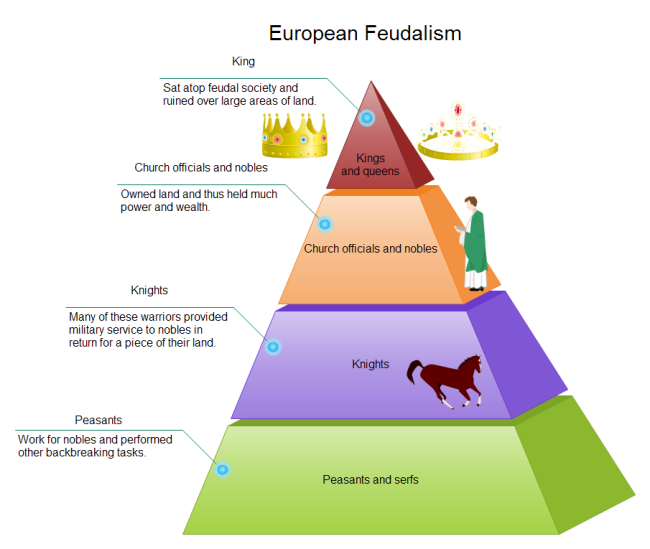

IT IS USUALLY DISCUSSED WITHIN A EUROPEAN CONTEXT, SOMETIMES FOCUSING ON ENGLAND AND FRANCE, BUT TYPICALLY SUGGESTING THAT “FEUDALISM” WAS WIDESPREAD. WITHIN THE NATIONAL STANDARDS FOR WORLD HISTORY AND SOME WORLD HISTORY TEXTS “FEUDALISM” IS BROADLY DEFINED WITH ECONOMIC, SOCIAL AND POLITICAL CHARACTERISTICS.


THESE VIEWPOINTS CHALLENGE SOME OF THE CONCLUSIONS FOUND IN THE EARLIER WEB-BASED PROJECT. 1 MY MORE RECENT RESEARCH INTO DEFINITIONS OF “FEUDALISM” INDICATES THAT A WIDE GAP EXISTS BETWEEN THE PERSPECTIVES OF THOSE HISTORIANS WHO RESEARCH AND TEACH WORLD HISTORY AND THOSE WHO FOCUS MAINLY ON MEDIEVAL EUROPE. THE COMPLETE PROJECT, INCLUDING A CHART COMPARING EUROPEAN AND JAPANESE “FEUDALISM” CAN BE VIEWED ON THE WEB. OUR GOALS INCLUDED A FOCUS ON LITERATURE AS A TOOL FOR TEACHING ABOUT JAPAN’S HISTORY AS WELL AS A CLEARLY DEFINED CONNECTION WITH THE WORLD HISTORY STANDARDS. THREE YEARS AGO A COLLEAGUE AND I DEVELOPED A UNIT USING JAPANESE “FEUDALISM” AS ITS CORE. WITH THE GROWTH OF THE WORLD HISTORY MOVEMENT, MANY ASIAN SPECIALISTS ARE CLEARLY FOCUSED ON THE INTEGRATION OF ASIAN MATERIAL INTO A WORLD HISTORY FRAMEWORK.
Re-envisioning Asia: Contestations and Struggles in the Visual Arts. Distinguished Service to the Association for Asian Studies Award. Distinguished Contributions to Asian Studies Award. Striving for Diversity, Equity, and Inclusion in Asian Studies: Humanities Grants for Asian Studies Scholars. Gosling-Lim Postdoctoral Fellowship in Southeast Asian Studies. Cultivating the Humanities & Social Sciences Initiative Grants. AAS Takes Action to Build Diversity & Equity in Asian Studies. AAS Community Forum Log In and Participate. Know about the Egyptian Feudal Hierarchy. Their duty was to take care of the day to day tasks of the higher class. Servants–These were the men and women who were like slaves to the king and nobles. They did not take land on rent from the nobles. Yeomen – These were the peasants who worked very hard to possess a land of their own. They were bounded for little services to the higher class as compared to the peasants. Freemen – These were the peasants who did not take the land from the nobles and were involved in the trade. Peasants were also bound to pay rent to the nobles. Peasants – The knights and nobles further granted their land to the lower class called peasants for agriculture purpose and in return expected some special personal services. They were loyal authorities of the king and king granted them his land in return for the military services. The Nobles/ Knights–Next to the king, came in the pyramid the nobles and knights. It was considered an honor to sacrifice one’s life for the king. All were to bow before the king and his ultimate decisions. Except the pope no one was able to question a king’s decision. The King – The king possessed all the land along with the extreme power in the kingdom. The pope even possessed the power to announce a judgment against the king and place some other royal authority at the place of king just for the benefit of kingdom. But in this pyramid, there was a person who got the right to interfere even in the king’s decision when the time called for it, the pope, considered God’s voice on earth. The Pope – The king was considered having supreme power and ruled the country. These are discussed briefly as below: Pyramid of Feudal Hierarchy The pyramid of the feudal system was broadly categorized as the pope, the king, the knights and nobles, peasants, freemen, yeomen, servants. This way land got subdivided from higher classes to lower and so got the privileges. 
King granted the land to the knights and nobles in return for the military services whereas nobles and knights further granted the land to peasants, who belonged to lower class, for agriculture purpose and in return expected some desirable rent and their personal services. The king, who ruled the country with the God’s wish, could use this land. This pyramid and the division of power were based on the belief that all the land belonged to the God.








 0 kommentar(er)
0 kommentar(er)
